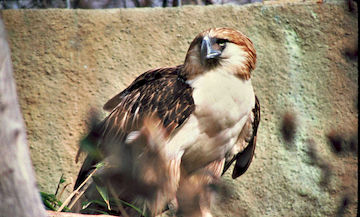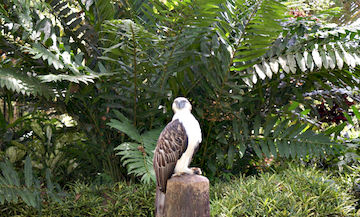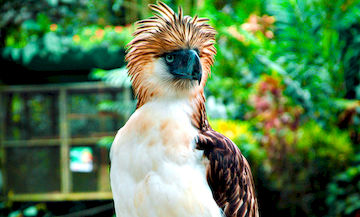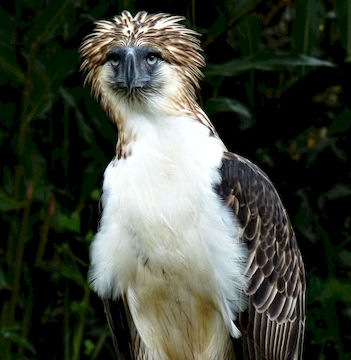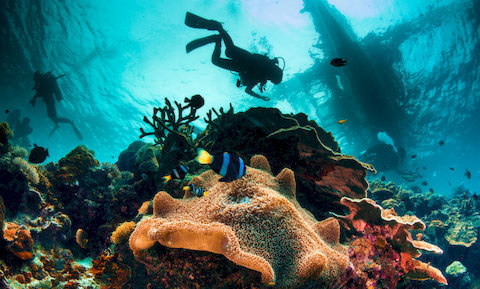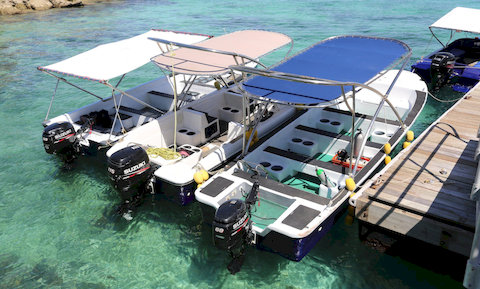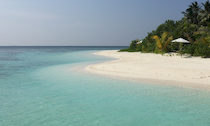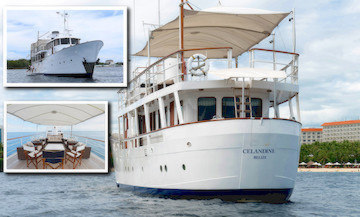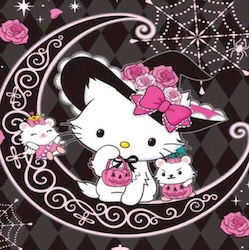The Philippine Eagle
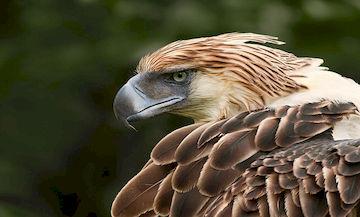 The Philippine Eagle, popularly known as the Monkey-Eating Eagle, is one of the rarest birds in the world. It is the Philippines' national bird. Endemic to the country, it was declared as the national bird in 1995 by President Fidel V. Ramos through Proclamation No. 614.
The Philippine Eagle, popularly known as the Monkey-Eating Eagle, is one of the rarest birds in the world. It is the Philippines' national bird. Endemic to the country, it was declared as the national bird in 1995 by President Fidel V. Ramos through Proclamation No. 614.
Prior to the great Philippine Eagle (Pithecophaga jefferyi), the country's national bird was the Maya, a small white and brown bird seen everywhere in the country.
The bird of prey is locally known as Haribon or Haring Ibon which means Bird King, Agila meaning eagle and Banog meaning kite .
It is one of the largest, strongest, and rarest bird in the world. Unfortunately, the Philippine Eagle is critically endangered due to poachers and deforestation. The bird is chosen as a national symbol as it represents the strength, uniqueness, a love for freedom, and power of the Filipino people. Losing them to extinction would mean losing a nation's precious biological heritage.
Philippine Eagle Facts
Although given the name "Monkey-eating Eagle", the Philippine Eagle does not only eat monkeys, contrary to popular beliefs. In recent studies, the bird also preys on bats, snakes, rodents, pigs, monitor lizards, and flying lemurs. It has clearer and sharper eyesight than humans. Its blue-gray eyes have the capacity to see eight times the distance compared to the human eye. This vision is crucial for hunting.
Like most eagles, they are monogamous (loyal to one mate for life). A nesting pair can produce a single egg every two years. The male sexually matures at seven years of age and the female at five years. Both of the parents take part in the incubation of the egg, but the female does a majority of the incubating. When the egg hatches after 62 days (2 months), both parents take turns in hunting and feeding their newly hatched eaglet.
The Philippine Eagle was first discovered by a British explorer and naturalist, John Whitehead in 1896 in Paranas, Samar. Along with his servant, Juan, they observed the bird then collected it a few weeks later. In honor of Jeffery Whitehead, John's father who funded his expeditions, he named the species Pithecophaga jefferyi. Based on current genetic studies, it has no subspecies left among the living species of eagles in the world, making it very unique.
Philippine Eagle Size
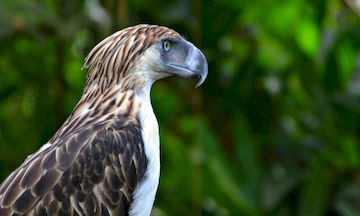 Aside from its strength and rarity, this bird of prey is notably recognized for its size. It is the largest living eagle in the world in terms of length! They can grow up to 102 centimeters (3 feet 4 inches) and have a wingspan of approximately 2.2 meters (7.2 feet). The female is typically larger than the male and can weight up to an impressive 8 kg (~18 lbs).
Aside from its strength and rarity, this bird of prey is notably recognized for its size. It is the largest living eagle in the world in terms of length! They can grow up to 102 centimeters (3 feet 4 inches) and have a wingspan of approximately 2.2 meters (7.2 feet). The female is typically larger than the male and can weight up to an impressive 8 kg (~18 lbs).
The Philippine Eagle can be distinguished by its nape adorned with long chocolate-brown feathers and a shaggy crest, a big arched beak, long crown feathers, and their two blue-gray eyes. The bird also has a loud and high-pitched noise that suggests its territorial and bold characteristics. Juveniles are known to beg for food by a series of high-pitched calls.
Philippine Eagle Habitat
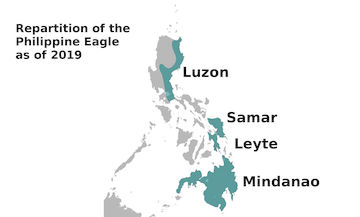 The Great Philippine eagle is found only in the Philippines, specifically on the islands of Luzon, Leyte, Samar, and Mindanao. According to the Philippine Eagle Foundation, an estimated 400 pairs are remaining in the wild. The species inhabits montane forests in steep and rugged mountains. Their diet relies on the availability of prey in their location.
The Great Philippine eagle is found only in the Philippines, specifically on the islands of Luzon, Leyte, Samar, and Mindanao. According to the Philippine Eagle Foundation, an estimated 400 pairs are remaining in the wild. The species inhabits montane forests in steep and rugged mountains. Their diet relies on the availability of prey in their location.
The sighting of the apex predator is a sign of a healthy environment. They play a vital role in keeping the ecosystem of a rainforest balanced. Having enough healthy forests for them to live in is not only beneficial to the bird but also for us. Healthy forests can help control soil erosion, minimize flooding, diminish the effects of climate change, and provide cleaner oxygen.
Threats to the Philippine Eagle
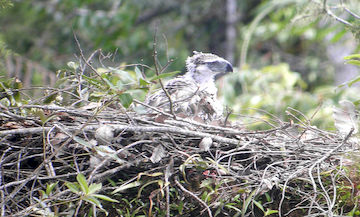 The Philippine Eagle is on the IUCN Red List as Critically Endangered. Habitat loss and human persecution are the top two threats to their survival. Despite the laws protecting them, at least one eagle is killed every year because of shooting. Most of the time, they are shot or hunted out of fear, ignorance, or worse- for sport. People who are caught doing this illegal act are subject to 12 years of imprisonment and hefty fines.
The Philippine Eagle is on the IUCN Red List as Critically Endangered. Habitat loss and human persecution are the top two threats to their survival. Despite the laws protecting them, at least one eagle is killed every year because of shooting. Most of the time, they are shot or hunted out of fear, ignorance, or worse- for sport. People who are caught doing this illegal act are subject to 12 years of imprisonment and hefty fines.
Deforestation poses a massive threat to the balance of an ecosystem. Vast areas of tropical forests that are home to the Philippine Eagle are cleared out for commercial development and shifting cultivation. Mining activities, pollution, and pesticides significantly affect their survival as well. The species can live up to 60 years of age in the wild, but with these harmful conditions, it might be difficult for them to survive that long.
Philippine Eagle Conservation
Dioscoro S. Rabor, a Filipino ornithologist and Jesus A. Alvarez, the director of the Parks and Wildlife Office, were the first to bring international attention about the decline in numbers of the Philippine Eagle in 1965. This caught the attention of Charles Lindbergh, an American aviator best known for crossing the Atlantic alone and without stopping in 1927. He was a representative of the World Wildlife Fund and helped persuade the government to protect the eagle.
The first program that was started to help preserve the species was in 1969 called the Monkey-eating Eagle Conservation Program by the government. Since then, numerous programs and organizations have been established to help protect and conserve the rare bird of prey. Kabayan is the first captive-bred bird released in the wild in 2004 on Mindanao but was accidentally electrocuted in January 2005. Another eagle, named Kagsabua, was released on March 6, 2008, but was shot and eaten by a farmer.
Several cases of such have occurred multiple times where eagles are treated for gunshot wounds then released to the wild, only to be shot again. The Philippine Eagle may not be found in the wild soon enough if this continues. Fortunately, there are concerned and dedicated organizations out there who are committed to raising awareness and conserving one of the Philippines' greatest national treasure. The Philippine Eagle Foundation has been successfully breeding and protecting the habitats of the species for over a decade.
Philippines Eagle Researches and References
All pictures used for this article are courtesy of Wikimedia Commons, and shankar s. .
If you want to know more about Philippine Eagle, take a look at some of our references below.
- Philippine Eagle at the edge of existance
- Wikipedia Philippine Eagle
- Philippine Eagle Foundation
- 11 Facts about the Philippine Eagle
- Pithecophaga Jefferyi
- Beauty of Birds
- Philippine Eagle Soaring High
- Philippine's National Bird
Speaking about Philippine Eagle, do you know how many are left in the wild as of 2018? There is roughly 800 Philippine Eagles left in the wild.
Last, but not Least
If you would like to receive interesting content like this in your email Inbox, subscribe to our newsletter.
In addition to our monthly newsletter, we will send you our weekly e-Bulletin with one fascinating topic, like today. There will be no advertising or sales pitch.
We also want to thank YouTube for the amazing videos on this page.
Thanks for reading, and if you wish, see you next week!
The Research and Media Team at Scotty's.
Disclaimer: The views, ideas, and opinions expressed by the writers of Scotty's Media team do not necessarily reflect or represent the views, ideas, and opinions of the company, Scotty's Action Sports Network, Inc.
More Pictures of the Philippine Eagle
